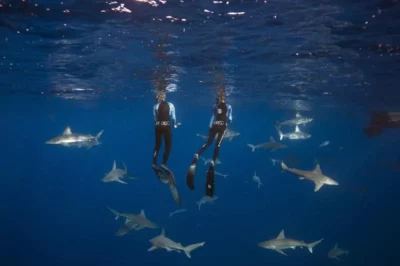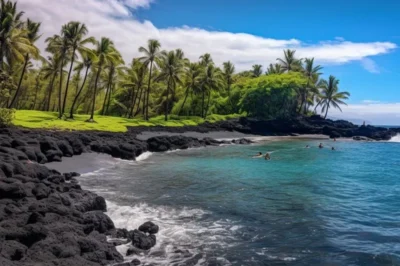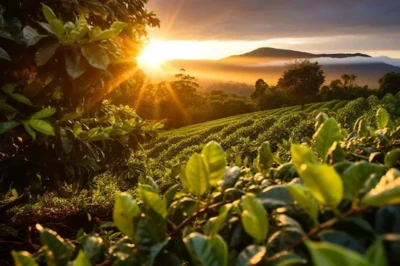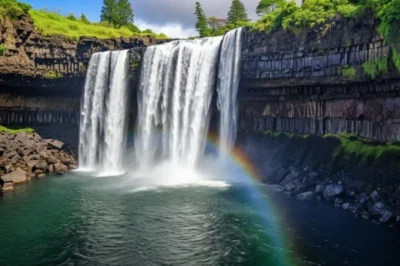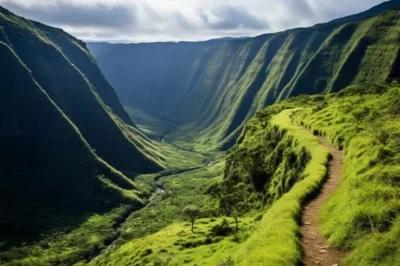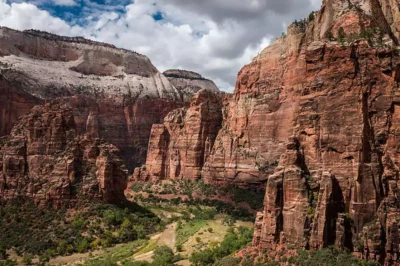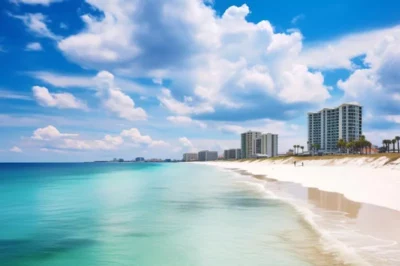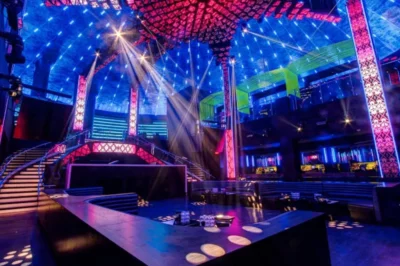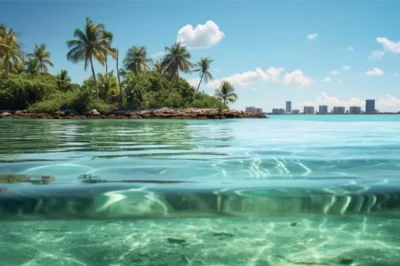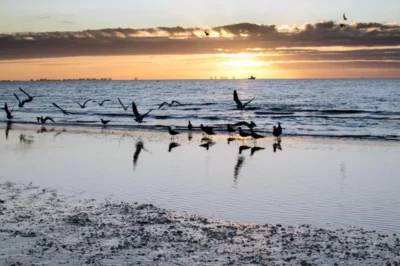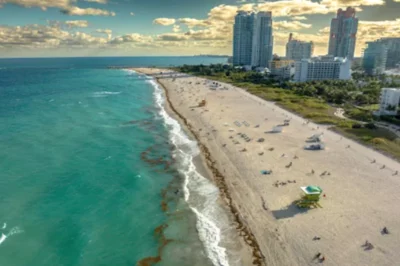6 Top Big Island’s Waterfalls in Hawaii: More than Just Beaches
Surrounded by lush greenery, one of those places where the soothing sound of water crashing against rocks fills the air. This is Hawaii, right on the Big Island, where you’ll see the splendor of its mesmerizing waterfalls.
- The Unique Geography of the Big Island
- Best Waterfalls in Big Island
- Akaka Falls
- Rainbow Falls
- Umauma Falls
- Kulaniapia Falls
- Pe’epe’e Falls and Boiling Pots
- Hi’ilawe Waterfall
- How to Fit Visiting These Waterfalls in Your Itinerary
- When to Visit the Big Island for Waterfall Chasing
- FAQs
- Can You Swim in Any Waterfalls on the Big Island?
- Are There Waterfalls Near Kona?
- Which Big Island Waterfall is Easiest to See/Visit?
- Which Big Island Waterfalls Are Free to Visit? No Cost, All Wow
Located mostly on the north and east sides of the island, thanks to abundant rainfall and dramatic elevation changes thanks to the island’s volcanoes, these waterfalls are in a position to capture hearts.
But here’s the catch: there are so many waterfalls on the Big Island that you might have a hard time deciding which one to visit. In this guide, we focus on the highest, most popular and easily accessible waterfalls to help you make the most of your time in this tropical wonderland.
The Unique Geography of the Big Island
To understand why the Big Island has so many waterfalls, you first need to take a look at its unique geography. It’s a place dominated by volcanoes like Mauna Kea and Mauna Loa, which is why it’s full of impressive landscapes and breathtaking waterfalls.
It’s not just their height that makes them so spectacular, but also the island’s unique climate zones. So where do you think you can find most waterfalls? Look to the rainforests in the north and east. These areas receive so much rain that the surrounding area turns into a rainforest.
As the water flows from the high ground, it forms deep valleys and canyons on its way to the sea. This results in different types of waterfalls, from gentle cascades to dramatic drops.
Best Waterfalls in Big Island
Akaka Falls
If you want the full Hawaiian waterfall experience, you should go to Akaka Falls. At 422 feet high, this waterfall will make you say ‘wow’ the first time you see it. The best part is that it’s easily accessible and a great place to go with the family.
It’s located just north of Hilo in Akaka Falls State Park and is one of the island’s most popular natural attractions. You have to pay 5 dollars if you enter by car and 1 dollar if you enter on foot. You might think that reaching such an impressive waterfall would require a difficult hike, but you’d be wrong. You can reach this natural wonder with just a 0.4 mile walk. And not only the destination, the journey is just as beautiful.

Now, you might be thinking that getting to such an awe-inspiring waterfall would involve some strenuous trekking, right? Wrong! A mere 0.4-mile hike takes you right to this natural spectacle. And it’s not just about the destination; the journey itself is a treat.
Imagine yourself walking through a rainforest full of wild orchids, tall bamboo trees and vast ferns. You feel like you’ve stepped into a movie scene, but it’s better because you’re really there, smelling the earth, hearing the leaves rustle and being cooled by the mist of waterfalls hitting your face.
The trail is family-friendly and can take half an hour on a leisurely walk. Even grandma can do this hike. The starting point is very close to the parking lot, so you are unlikely to get lost.
Rainbow Falls
Another waterfall experience that is both easy and mesmerizing is Rainbow Falls. Located right in the heart of the town of Hilo, this sprawling waterfall is a short drive from almost anywhere in the area. But easy access isn’t its only feature.

You’re standing in front of a roaring waterfall and as the mist rises, a rainbow forms in the water mist. The best time to see this amazing sight is early in the morning, so you might want to set your alarm.
Umauma Falls
Umauma Falls is a series of three waterfalls on the Umauma River on the beautiful Hamakua Coast, 16 miles north of Hilo. Unlike the other waterfalls, Umauma is located on private land managed by the Umauma Experience.
The entrance fee is $12 per person and you don’t need to book in advance. It may seem a bit steep, but it’s worth it. The fee includes access to a gorgeous garden. These waterfalls aren’t just for a quick photo op; there are plenty of activities on offer, from zip-line adventures to kayaking.

The views at Umauma are particularly breathtaking, all from a special viewing platform that offers a panoramic view of the three waterfalls.
Kulaniapia Falls
Kulaniapia Falls is a hidden paradise on the lower slopes of Mauna Kea, close to Hilo. Now, before we talk about the beauty of this 120-foot-high waterfall, let’s be clear: this experience is a little more private but definitely worth it!
Located within the grounds of the Kulaniapia Inn, this waterfall was previously the exclusive privilege of overnight guests only. But now, fortunately, the inn has decided to share this corner of paradise with day visitors as well. Here are the details:

A $49 day pass grants entry to this private waterfall paradise. And it’s not just the waterfalls; the pass gives access to 42 acres of grounds that offer spectacular views of four waterfalls and tranquil bamboo groves. Additional benefits that really seal the deal.
Subject to river safety conditions, this day pass also gives you the chance to swim, kayak or paddleboard under Kulaniapia Falls, using the resort’s own equipment.
Pe’epe’e Falls and Boiling Pots
Another slightly more tranquil but equally impressive waterfall should be on your radar, Pe’epe’e Falls and the Boiling Pots.

Just 1.5 miles upstream from the popular Rainbow Falls, these lesser-known falls offer a different experience. Although Pe’epe’e Falls is close to ‘boiling pots’, a dangerous local swimming spot, it’s important to heed the safety warnings. As several fatal accidents have occurred here, it is best to view the beauty of the falls from a safe distance.
Hi’ilawe Waterfall
One of Hawai’i’s highest waterfalls, Hi’ilawe Falls is a massive waterfall located in the Waipi’o Valley. With a total height of about 1,450 feet and a direct drop of 1,201 feet, it takes your breath away!
Although you cannot hike directly to the falls, there are many vantage points in the valley from which you can view this majestic waterfall. You can descend to the valley floor either by car or opt for a horseback tour for a more authentic Hawaiian experience.
Since the river that feeds Hi’ilawe is used for irrigation, the waterfall may not be in full flow, especially during the rainy season. So adjust your expectations accordingly.
How to Fit Visiting These Waterfalls in Your Itinerary
So, you’re stoked about visiting these waterfalls, but maybe you’re scratching your head about how to fit them into your jam-packed Hawaiian itinerary?
Drive-Thru Strategy: The simplest way to get a glimpse of these natural wonders is to take a waterfall tour by car. As you travel the scenic roads of the Big Island, pull over when you are near a waterfall.
A short stop of about an hour for each waterfall offers plenty of time to take a few photos and admire. This is a highly convenient approach for most travelers.
The Half-Day Waterfall Marathon: If you’re a waterfall enthusiast, then consider a half-day waterfall marathon. Especially if you’re staying around Hilo, you can easily reach most of our recommended destinations in half a day.
When to Visit the Big Island for Waterfall Chasing
You might be wondering, is there a best time to chase waterfalls on the Big Island? Well, let me spill the beans.
- The Wet Season: If you want to see the waterfalls at their most spectacular, try to coincide with the rainy season. This is usually between November and March. However, some waterfalls, such as Hi’ilawe, may not be at their former strength due to irrigation practices.
- The Dry Season: If you go during the dry season, from April to October, the waterfalls may be a little quieter, but the views will still be amazing. Plus, fewer crowds can mean a more peaceful experience.
- Special Events and Holidays: During special occasions and holidays, these natural wonders can be more crowded. If you plan to go around Christmas or New Year’s, try to get there early in the morning to beat the crowds.
FAQs
Can You Swim in Any Waterfalls on the Big Island?
The age-old question: Can you actually swim in these awe-inspiring waterfalls? The answer is: it depends.
Kulaniapia Falls: You’re lucky if you have a day pass at Kulaniapia Waterfall. You can swim, canoe or even paddleboard under safety precautions. But always remember to check the conditions first!
Pe’epe’e Falls and Boiling Pots: While Pe’epe’e Falls and the Boiling Pots look tempting, swimming here is not recommended due to dangerous rapids and the risk of flash flooding.
Are There Waterfalls Near Kona?
When you think of Kona, you immediately think of coffee plantations and beautiful beaches. But there are also waterfalls here, although fewer than in Hilo. One of them is a small waterfall in the Pololu Valley, which can be reached after a bit of a hike. If you’re staying in Kona, it’s worth the trip.
Which Big Island Waterfall is Easiest to See/Visit?
If your schedule is tight or long hikes aren’t your thing, head to Rainbow Falls. Located in Hilo, this waterfall is almost within driving distance. There are no long hikes, you can even go early in the morning and see a rainbow in the mist.
Which Big Island Waterfalls Are Free to Visit? No Cost, All Wow
Budget travelers, rejoice! Not all waterfall experiences come with a price tag.
- Rainbow Falls: Again, Rainbow Falls stands out. There is no entrance fee, easy access and the view is spectacular.
- Pe’epe’e Falls: Pe’epe’e Waterfall is also free to visit. But due to security concerns, this is a place that is mostly viewed from a distance.
- Waipio Valley: Head to Waipio Valley to see Hi’ilawe Falls from a distance. The viewpoints are free, but keep in mind that you can’t see it up close without a guided tour, which can be costly.
Conclusion
Let’s be real, there is something almost magical about witnessing the sheer power and beauty of a waterfall. So don’t just stick to the Big Island beaches; add some of these spectacular waterfalls to your itinerary and experience the Big Island in a whole new way.
